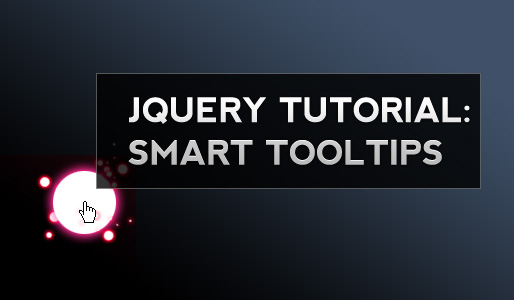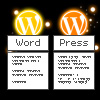
Create a multilevel Dropdown menu with CSS and improve it via jQuery
Some of you might have noticed, I have a partiality for sleek menus. As I recently had to create a multi level dropdown menu for one of my customers, I wanted to improve it with a little bit of jQuery, but couldn’t find a script that accomplished what I needed.
So I decided to build this menu from scratch and share my thoughts as well as the code with you.
So before we start: this is what we are going to build
The first part of this tutorial is dedicated to the task of building a working CSS-only dropdown menu (also known as suckerfish menu), the second part will show you how you can pimp the whole thing with a few lines of jQuery.
The CSS-only menu is cross browser tested and from what I can tell works with all browsers except for IE6.
The Internet Explorer needs the addition of our jQuery function to work properly.
To create a CSS-only dropdown menu that works without Javascript (even in IE6), you need tons of extra markup and CSS, if you really need this for any reason check out Stu Nicholls CSSplay, he addresses this problem with heavy (ab)use of conditional comments =)
Now that you have a little bit of background information, lets create our own menu:
First of all we need the XHTML Structure of our soon-to-be terrific menu. We will use a nested list for this purpose, top level list id is “nav”:
<ul id="nav">
<li><a href="#">1 HTML</a></li>
<li><a href="#">2 CSS</a></li>
<li><a href="#">3 Javascript</a>
<ul>
<li><a href="#">3.1 jQuery</a>
<ul>
<li><a href="#">3.1.1 Download</a></li>
<li><a href="#">3.1.2 Tutorial</a></li>
</ul>
</li>
<li><a href="#">3.2 Mootools</a></li>
<li><a href="#">3.3 Prototype</a></li>
</ul>
</li>
</ul>
Thats it for the HTML part; without CSS styling our menu looks like this: Step 1
Now for the stylesheet part:
#nav, #nav ul{
margin:0;
padding:0;
list-style-type:none;
list-style-position:outside;
position:relative;
line-height:1.5em;
}
This removes the indents browsers tend to make, as well as the bullets from #nav and all its child-ul elements. The “position:relative” is needed since we will arrange some of the contained elements with position:relative and absolute. This is necessary since relative and absolute positioned elements are positioned according to their containing blocks with a position attribute, other then static.
Line-height defines the height of each list item. You could set the height attribute for your list-items to define their height, but line-height will center the link text vertically without the need to play with margins and paddings.
#nav a:link, #nav a:active, #nav a:visited{
display:block;
padding:0px 5px;
border:1px solid #333;
color:#fff;
text-decoration:none;
background-color:#333;
}
#nav a:hover{
background-color:#fff;
color:#333;
}
This one is pretty straight forward:
it will style each hyper link in our menu a little bit. At this time the menu looks like this: Step 2
Now lets add some more styles:
#nav li{
float:left;
position:relative;
}
This will align our list elements horizontally.
#nav ul {
position:absolute;
width:12em;
top:1.5em;
display:none;
}
This will position the nested Lists right beyond the main menu and give them a width of 12em. The width attribute is needed so that the list items within display vertically again. The Top attribute should have the same value as the line-height attribute we defined for #nav.
#nav li ul a{
width:12em;
float:left;
}
This will set the width of the hyper links to 12 em (which in combination with the width of the UL set above results in a horizontally displayed sub menu, despite of the ongoing float:left)
#nav ul ul{
top:auto;
}
#nav li ul ul {
left:12em;
margin:0px 0 0 10px;
}
#nav li:hover ul ul, #nav li:hover ul ul ul, #nav li:hover ul ul ul ul{
display:none;
}
#nav li:hover ul, #nav li li:hover ul, #nav li li li:hover ul, #nav li li li li:hover ul{
display:block;
}
#nav ul ul and #nav li ul ul define where we display the sub menus.
The hover states define which items we want to show when hovering over an item (only the next sub level, not all of them)
After applying these styles we got this menu: Step3
If you are working with a browser other than IE6 you should have a basic dropdown menu now.
Gogo jQuery!
So lets spice up the menu a little bit. First of all here is the whole jQuery Code I used to create the effect:
function mainmenu(){
$(" #nav ul ").css({display: "none"}); // Opera Fix
$(" #nav li").hover(function(){
$(this).find('ul:first').css({visibility: "visible",display: "none"}).show(400);
},function(){
$(this).find('ul:first').css({visibility: "hidden"});
});
}
$(document).ready(function(){
mainmenu();
});
Step by step description:
$(" #nav ul ").css({display: "none"}); // Opera Fix
This is a small fix for Opera, which doesn’t hide the menus fast enough, if you hover above them and so creates a flickering effect. $(” #nav ul “) is the jQuery way to select all unordered lists in #nav. Usage of this is similar to selecting CSS elements. The .css({display:”none”}) sets the display attribute for all Unordered lists to none.
$(" #nav li").hover(function(){ // here goes mouse over effect
},function(){ // here goes mouse out effect
});
This is the jQuery function for hovering. Really simple to use: first function lets you define what happens when you hover over a specific item( in our case a list item), second function is used for the mouse out event.
$(this).find('ul:first:hidden').css({visibility: "visible",display: "none"}).show(400);
This function finds the first hidden unordered list within the currently hovered list item and shows it. The function “.show” works only under specific circumstances, this is why we set the display to none. The number between the braces defines the animation speed in milliseconds.
$(this).find('ul:first').css({visibility: "hidden"});
This is the mouse out event: we use visibility instead of display since the show function mentioned above, sets display to “block” at the end of the animation. This way if you would hover just a short moment over the item the item would not display for the ongoing animation and then pop out all of a sudden. Using visibility prevents this flickering.
$(document).ready(function(){
mainmenu();
});
This function will call our mainmenu() function as soon as the html document is ready.
We are done now, if you can’t get this to work for any reason, here is a working example for download:
Includes: HTML File, CSS File, Javscript Files
Have fun creating your own menu ;)
Update :
I have added some small fixes to the script which were suggested by some of my readers, so thanks for adding improvements. ;)
Another thing I wanted to note: I have seen this script in many templates and wordpress themes now, often used in conjunction with one of wordpress automatic list generating features (wp_list_categories, wp_list_pages)
If you use it that way wordpress adds a title attribute to each link, which can create a flickering effect when the browser tooltip for the title appears. If you are using the script this way you should add the following line of jquery at the beggining of the script to remove the titles:
$(" #nav a").removeAttr("title");
(Last updated 18.09.2008)









Good Tutorial! i liked it thanks!!!
Great tutorial :
Is there a way to change the font from the css? im changing it to #nav, #nav ul but it keeps showing me a serif font and I want a sanserif font is there a way o do it?
pfff nevermid that was a stupid question i was writing font instead of font family hehe awsome nav bad thou thanx a lot
Hey again Just another question. is it possible to have a rollover button in the main section of the menu to make it look better?
jason question 1:
If you set up hover to li elements then it stay in “opened” state. but don’t work in IE6
You also can try
http://snipplr.com/view/2123/suckerfish-dropdown-menus-jquerystyle/
Nice tutorial! Actually perfect for my freelance work:) But I have a question.
Since its been stated that this has been done in FF, I was wondering if anyone here has already had the fix for IE. I viewed my site on IE and the dropdown part wasn’t working. Although it was a good thing that the menu still look normal (only w/out the drop down effect) but if anybody thought of a fix for IE here pls can you email me at yuklidaboganda@gmail.com or just reply:P I would greatly appreciate the help:)
I found using multiple drop down menus (I have four references to ) on the page that only the first will have the jQuery ‘opening’ effects. The others just pop onto the screen. Any idea why that is?
Hi
Nice tutorial. I have used this in my site. Just a doubt, how we can change the background color from black to another color.
Thanks
You are so awesome! Thanks for sharing this, it was exactly what I needed!
I’m having a bit of a problem though. Although it works in IE, it’s shooting the menu off to the right instead of under the button.
http://dualimagephotography.com/services.php
That last one, “galleries” is the drop down. Any idea why?
I am using this wonderful nav bar for a website I am working on, there are a couple things I am curious about:
1. Is it possible to have the drop down text and line height smaller then the navigation bar itself?
2. How do you get color/image to go across the whole navigation and not just behind the buttons?
Thanks!
Thank you very much for this tutorial. You saved my day… :)
Dude,
Your menu ROCKS. I found it while googling – but I must admit – your entire site is pretty sick.
cheers
El mejor menu que pude haber encontrado…
Simple y completo.
tenia problemas para actualizar mi menu ya que estaba con java script y usa base de datos pero ahora que estoy usando jquery ps me complique la vida y con este ejemplo ps me cayo a pelo ya que incluso se puede adaptar a base de datos.
gracias muchas gracias.
sigan adelante y felicitaciones por su gran aporte
The second level menu (3.1.1 & 3.1.2) is displayed buggy in new IE 8 (beta).
Any ideas how to work around this?
well done ,Thank you very much for nice tutorial. this tutorial save me a day :)
This is great, thank you!
You just saved me an evening of coding :)
-JO
I was having major issues using your method because if you scroll over a link back and forth it queues up animation, resulting in the box fading in and out over and over. Sometimes it would flicker as my cursor was right on the edge of the button, queuing up a lot of animation. After playing around, I found a very easy way to check if the animation was already happening without adding any if statements or timeout functions. All I had to do was check to see if the menu was already visible and only apply the .show animation to hidden elements using the :hidden selector. I would recommend the following simple change for anyone else experiencing this problem:
Simply change this line:
$(this).find(‘ul:first’).css({visibility: “visible”,display: “none”}).show(400);
to this:
$(this).find(‘ul:first:hidden’).css({visibility: “visible”,display: “none”}).show(400);
I hope some of you find this helpful, and maybe you could even add it to your tutorial.
Sounds like a good solution to me although I wasn’t able to reproduce this behavior. When I scroll over the links the animation doesn’t queue up. Which OS, browser and jQuery version are you using?
I had the issue in FF3 and IE6/7, all running on XP SP2. I had some modifications to the styles that may have something to do with it, I don’t know for sure but I’d bet others are having this problem as well. I think it started happening when I switched the animation to fadeIn, but I’m not sure. The final version of mine is below, if you’d like to test it out. I used class=”nav-horiz” instead of id=”nav” and in some cases styled for menus only within the header, as I will be using this script in multiple places for my current project. I hope you guys find this useful:
———-JS———-
function mainmenu(){
$(” .nav-horiz ul “).css({display: “none”}); // Opera Fix
$(” .nav-horiz li “).hover(function(){
$(this).find(‘ul:first:hidden’).css({visibility: “visible”, display: “none”}).fadeIn(400);
},function(){
$(this).find(‘ul:first’).fadeOut(100).css({visibility: “hidden”, display: “block”});
});
}
$(document).ready(function(){
mainmenu();
});
———-CSS———-
/*— Horizontal Navigation Bar —*/
#header .nav-horiz {
position: absolute;
top: 90px;
left: 0px;
width: 760px;
margin: 0px 10px;
background: #43071a url(../images/nav.jpg) repeat-x center top;
border-top: #43071a solid 1px;
border-bottom: #43071a solid 1px;
}
.nav-horiz, .nav-horiz ul {
position: relative;
width: 100%;
margin: 0px;
padding: 0px;
line-height: 35px;
list-style: none;
}
.nav-horiz a:link,
.nav-horiz a:active,
.nav-horiz a:visited {
display: block;
padding: 0px 18px;
border-left: #a04e68 solid 1px;
border-right: #43071a solid 1px;
color: #fff;
text-decoration: none;
}
.nav-horiz a:hover {
color: #cdcdcd;
background: #720D2D;
}
.nav-horiz li {
float: left;
position: relative;
}
.nav-horiz ul {
display: none;
position: absolute;
top: 35px;
width: 182px;
background: #720D2D;
border-top: #a04e68 solid 1px;
border-bottom: #43071a solid 1px;
}
.nav-horiz li ul a {
float: left;
width: 145px;
line-height: 35px;
}
.nav-horiz li ul a:hover {
background: #43071a;
}
.nav-horiz ul ul {
top: auto;
}
.nav-horiz li ul ul {
left: 173px;
margin: 0px 0px 0px 10px;
}
.nav-horiz li:hover ul ul,
.nav-horiz li:hover ul ul ul,
.nav-horiz li:hover ul ul ul ul {
display: none;
}
.nav-horiz li:hover ul,
.nav-horiz li li:hover ul,
.nav-horiz li li li:hover ul,
.nav-horiz li li li li:hover ul {
display: block;
}
Oh yeah: jQuery 1.2.3 :)
Hey Vincent,
I was able to reproduce the bug with your script. The multiple fade ins happen because you are using the fadeOut function.
To have a real leave animation you have to alter the css as well since on leaving with the cursor, the css instantly kicks in and hides the sub menu items, just before jQuery can show the leave animation.
Therefore the fadeOut is useless at the current state.
Nevertheless I like your fix since it seems to be a good start to make such an animation possible ;)
Another thing I just learned is that the animation always queues up but with no animation for mouse leaving that doesn’t matter. Your addition to the code fixes this as well. The whole script becomes a little better through this, so thanks for your suggestion ;)
No problem, glad I could be of help. I am new to jQuery and taking a crash course at my job, and so far it’s been very exciting. Tutorials like this and sites like yours have been an indispensable resource, keep up the great posts.
I also noticed the css was happening immediately and ruining the fadeout as well, but I’m not sure how to make the css change queue up after the animation.
shouldnt be that hard..
I guess changing
$(this).find(’ul:first’).fadeOut(100).css({visibility: “hiddenâ€, display: “blockâ€});
to
$(this).find(’ul:first’).fadeOut(100);
should work
Hi Kriesi,
First of all Thanks!!!! That is one of the best tutorials i have come across!! I am very much a novice at this and i was hoping you might have the time to explain in greater detail how to convert this over to a vertical menu. I have managed to set the menu up so it sits vertically, but to get the sub menus to slide out to the right… i am at a bit of a loss.
Many Thanks for any help you can lend
Charlie
Guys
to this code works correctly in IE 7 you need input this code in the beggining of the page.
buy